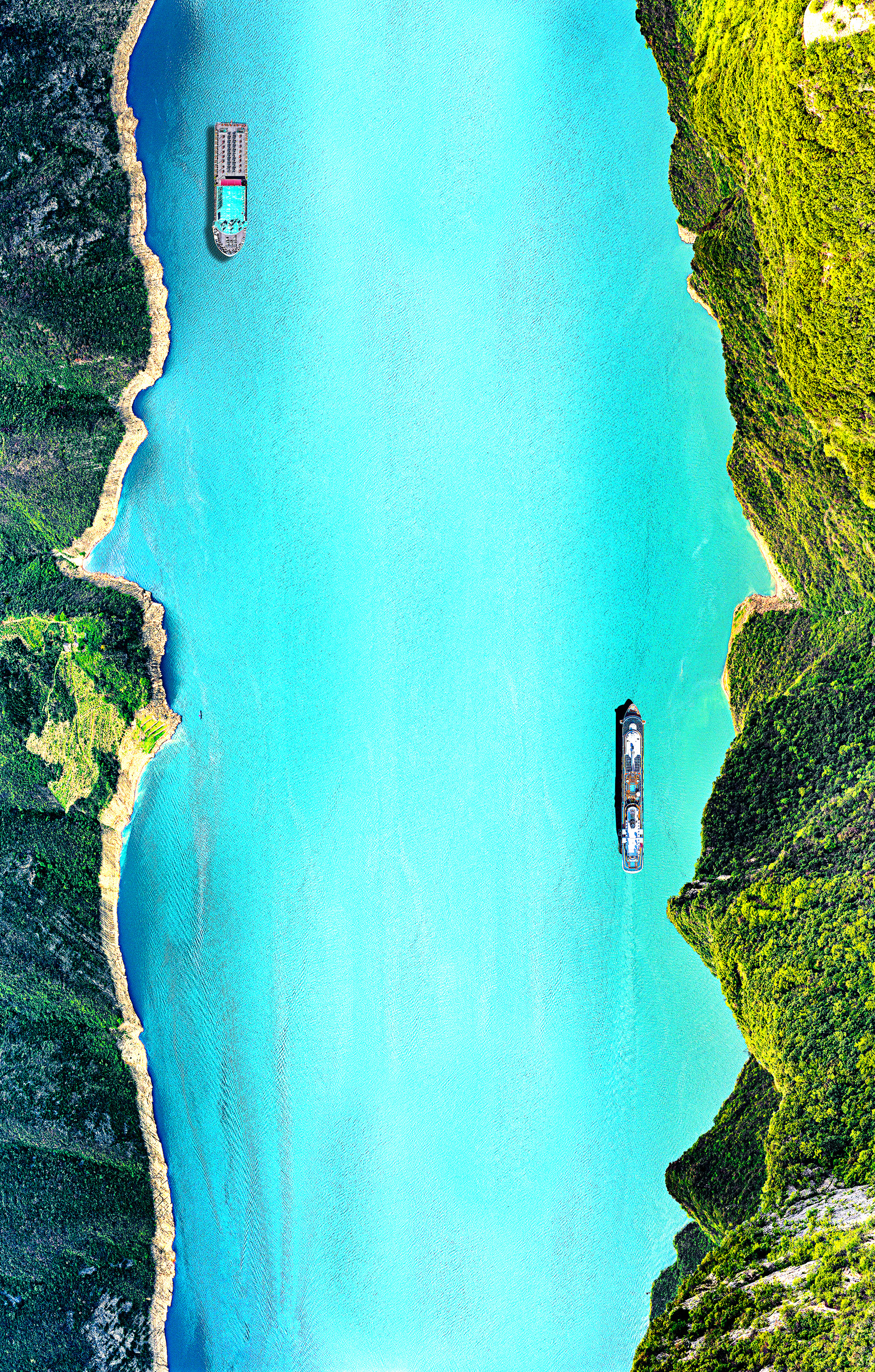Yangtze River has inspired poets and philosophers down the centuries, Xu Lin and Liu Kun report.

Editor's note: China Daily reporters leverage local expertise to devise different itineraries that showcase a blend of historical landmarks and natural wonders in highly recommended cities and sites, offering practical guidance to experience the country.
Originating on the Qinghai-Tibet Plateau, the Yangtze River is China's longest waterway, running more than 6,300 kilometers through 11 provincial-level regions before flowing into the East China Sea near Shanghai's Chongming Island.
The river's roaring rapids and picturesque riverbanks have inspired poets to craft verses that transcend awe-inspiring landscapes. Their poems embed profound philosophical ideas, patriotic sentiments, and emotions such as homesickness and lament for time's passage.
Born in the Yangtze River basin, the Warring States Period (475-221 BC) patriotic poet Qu Yuan crafted romantic works with vivid imagination and allegorical metaphors.
READ MORE: Cruising for inspiration
Tang Dynasty (618-907) poets Li Bai and Du Fu, and Song Dynasty (960-1279) scholar Su Shi traveled to or lived in the basin and left poetic masterpieces known throughout the ages.
During the Western Jin (265-316), Tang and Song dynasties, China witnessed three large-scale migrations toward the south of the lower and middle reaches of the Yangtze River.
Families of scholar-officials and civilians were forced to move due to chaos of wars and upheavals and brought advanced farming tools and craftsmanship, greatly boosting agricultural, economic and cultural development in the Yangtze River basin.
During the Tang Dynasty, porcelain and silk were transported from bustling port cities to destinations in Asia and Africa via the Maritime Silk Road.
Domestic goods flowed through the Yangtze River's vast tributary network, connecting regions in the lower and middle reaches to coastal ports for onward shipment along the Maritime Silk Road.
Situated at the confluence of the Yangtze River and the Grand Canal, Yangzhou (in modern-day Jiangsu province) emerged as one of Tang's largest ceramics distribution hubs.
Although no large kiln sites existed near Yangzhou, ceramics from kilns across China have been unearthed here, proving that they were gathered in the city before being transshipped to other regions or directly exported overseas.
This year marks the 620th anniversary of the legendary voyages of Ming Dynasty (1368-1644) navigator Zheng He. Between 1405 and 1433, he commanded seven epic maritime expeditions, leading massive fleets to over 30 countries and regions across Southeast Asia, South Asia, West Asia and East Africa.
The fleets set out from Nanjing (now capital of Jiangsu province), sailed along the Yangtze River before entering the East China Sea, and then traveled to the South China Sea.
His primary shipbuilding base was also in Nanjing, where the Yangtze River's extensive waterway network ensured the efficient transportation of shipbuilding materials and trade goods to the city.
With a principle of friendly exchanges, he presented gifts of gold, silver, porcelain and silk to rulers of foreign lands, promoted agriculture and shipbuilding techniques, and brought back to China spices, medicinal materials and exotic animals.
ALSO READ: Sustainability key to new Yangtze River revenue stream
A pre-Qin period (before 221 BC) classic claimed that Minjiang River was the source of the Yangtze River, a geographical dogma regarded as unchallenged truth thereafter.
In 1638, during his last expedition, Ming Dynasty explorer Xu Xiake reached the banks of the Jinsha River in modern-day Yunnan province. Defying established authorities with solid proof based on firsthand fieldwork, he boldly concluded that the much longer Jinsha River was the true origin and documented his findings in an article.
Unfortunately, his groundbreaking adventure was forced to halt in Yunnan when severe foot disease incapacitated him. Helped by local officials, he returned to his hometown along the Yangtze River, Jiangyin (also in today's Jiangsu) in 1640, where he passed away a year later.
It was not until the late 1970s that China's scientific investigation team confirmed the Tuotuo River — originating from meltwater of the glaciers of Geladandong, the main peak of the Tangula Mountains on the Qinghai-Tibet Plateau — as the Yangtze River's primary source.
Today, cruise ships navigating the Yangtze River and its tributaries allow tourists to enjoy the stunning scenery that poet Li Bai once acclaimed.
"With monkeys' sad adieux the riverbanks are loud;
my skiff has left ten thousand mountains far away."
Here, modern exploration and ancient longing converge on the river's timeless current.
China Daily takes you on a journey to some of the top sites along the middle reaches of this mighty waterway.
Zhou Lihua contributed to this story.
Contact the writers at xulin@chinadaily.com.cn


